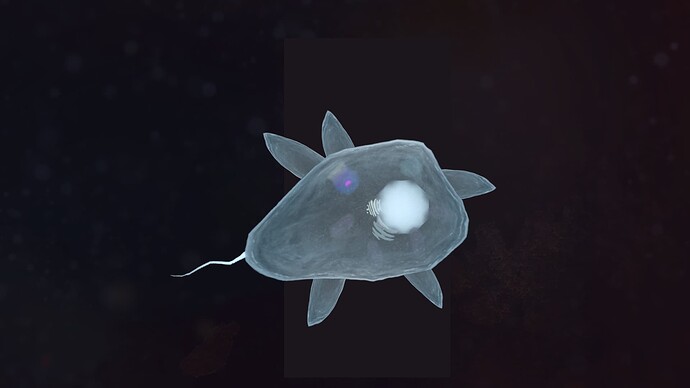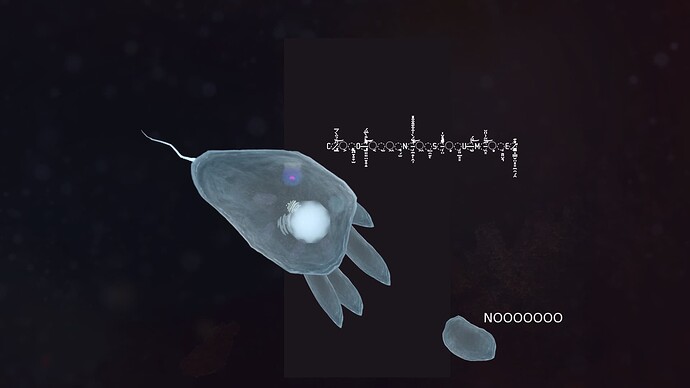I’m going to go ahead and put my pseudopodia concept into writing here, as it’s been drifting about as a loose idea for a while.
Psuedopodia are extensions of the cell’s membrane, extended and manipulated by the cytoskeletal structure to create “arms” to reach and grip prey, or otherwise provide a means of locomotion.
In Thrive there’s essentially two routes we can take with pseudopodia; A cosmetic feature potentially replacing the blue flashing of engulfment mode, or an adaptation that bolsters a cell’s predatory abilities.
Cosmetic
As a cosmetic feature, pseudopodia would replace the classic blue flashing used to represent a cell in engulfment mode. This would result in a more immersive experience by shedding blatant “gamey” elements like color flashing with a more natural and organic representation, while still remaining visually recognizable.
However, it is likely we would need to redesign the sounds associated with the feature so that it matches accordingly without being jarring.
We could either change the sound to somehow audibly represent pseudopodia, or make a sound that conveys a sense of being alerted, or aggressive intention that plays only on initial activation.
Adaptation
Instead of replacing the engulfment mode outright, pseudopodia could be an upgrade that boosts a cell’s ability to engulf at some kind of detriment.
Pseudopodia could grant a pulling force to engulfment, that would help the cell draw in prey at a larger radius or faster rate. It would likely cost a higher rate of ATP to use engulfment mode as a result.
There are three ways that pseudopodia could be implemented;
Fluidity Slider
Pseudopodia could be a feature of fluid membranes, appearing on the cell when fluidity is below a certain threshold.
We would need to communicate the point at which this occurs, and what exactly it does. It’s also worth considering if this would make high rigidity less desirable.
Button Toggle
The occurrence of pseudopodia could be toggled through the membrane tab. This would be clear and concise in implementation but might look a bit odd on it’s own.
Placable Part
The player could place pseudopodia on their cell as an external organelle, which would appear when entering engulfment mode. Each additional part would increase the strength, at the cost of energy.
Graphical Representation
Pseudopodia are unique compared to other features of cells, as they need to be flexible and able to move around the cell’s shape compared to the rigidity of external features like flagella or pili.
This would require a model that handles stretching fairly well, such as a simple oval or perhaps more of a “hill” shape. When engulfment mode is activated, the shapes will stretch out from within the membrane, or along it’s outer edge depending on how it works behind the scenes.
When nothing is nearby, the pseudopodia will simply wave about idly. When an engulfable object nears, they will begin to reach towards it automatically to simulate the cell grasping it to consume.
Personally, without more attributes to justify them being an adaptation, I think psueodopodia will be just fine as a cosmetic feature.

